Travels through Andalucia
![]()
After six weeks, it was time to move on. We packed up our household stuff back in the box and added two more small boxes for the books and information we had collected. We lugged them over to Correos, the Spanish postal service, and sent them off to Brussels. Then we packed our wheely bags and backpacks and, with a bit of sadness, closed the door of our cozy casa, walked to the Metro, and rode to Atocha Estacion to begin the last stage of this visit to Spain - a tour of Andalucia.
Cordoba
After six weeks of settled living, being on the road again was a major shift for us. We board the train and relax in our seats, feeling relieved to have all the packing and moving tasks behind us. The train left right on time and zipped at great speed through the Spanish countryside - rolling hills, then significant mountains, many tunnels and soon we pulled into Cordoba Estacion. A city bus takes us to the historic center and we find our way past the imposing walls of the Mezquita, the great mosque, through narrow streets to the Hostal Seneca. It's small and welcoming with a delightful patio garden filled with greenery and flowers (below left). We drop our stuff and go out to the Turisme for a map.
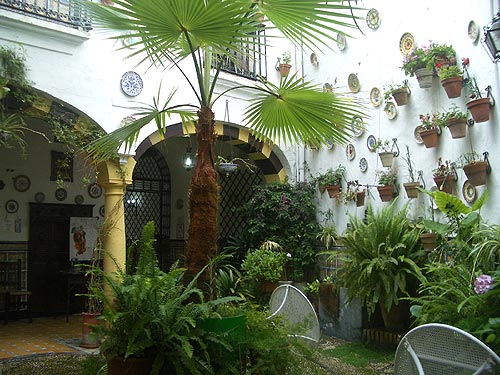
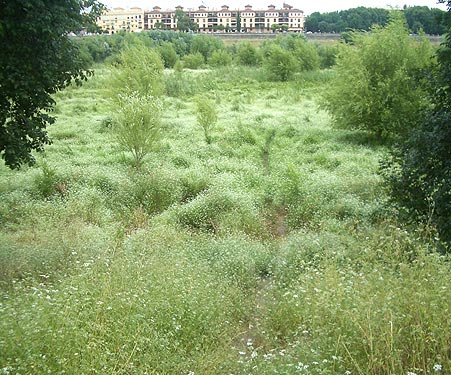
Being fluviophiles we were drawn to the Rio Guadalquivir to walk along the bosque (above right), the riverside forest, delighting in the tangle of large trees and marsh grass enlivened by birds and flowers. After this green connection we walked into the heart of the city, stopped at a taberna for a cerveza and then returned to the hostal. Our Rough Guide suggested a good restaurant for veggie food so we ventured out to find it. Success! We had a dinner with good food but not so friendly service. Ah well!
Walking back to our hostal, we agreed that it was good to have finished one phase of our travels and to have begun the next.
After breakfast in the hostal patio, we walked to the Mezquita, the Great Mosque/Cathedral that had drawn us to Cordoba. We walked through the imposing exterior wall and continued through the Patio de los Naranjos to the main entrance (below, top left). This took us into the oldest section of the mosque where we encountered a forest of columns supporting double arches of red and creme in rows back into the shadows (below, upper right). The effect was soothing in spite of the crowds milling about and we walked slowly, just looking around and up to the intricate designs (below, lower left) and the dark wood ceilings.
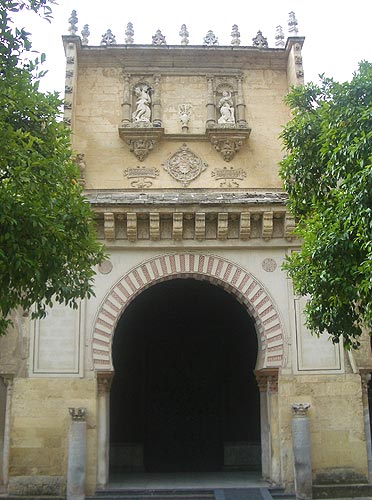
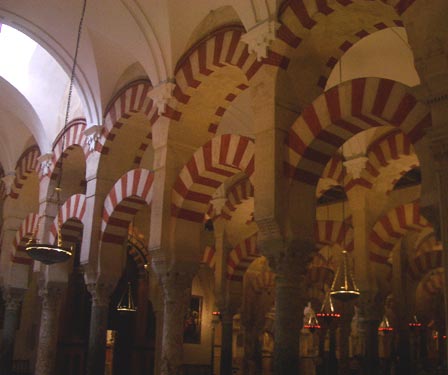
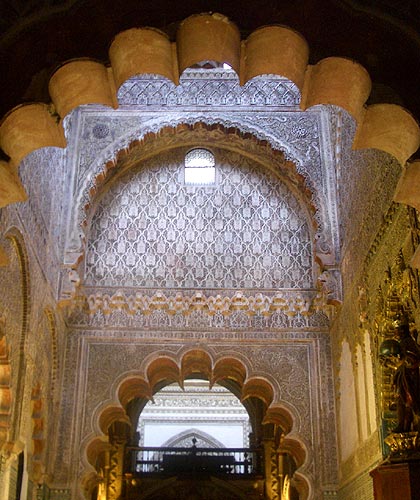
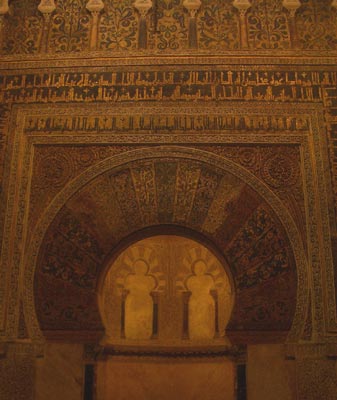
From 756 to 1000, six rulers of Moorish Spain built sections of this imposing building. As we walked through to the back, we observed subtle changes in style and form. Then we reached the Mihrab, (above, lower right) the holiest place, facing toward Mecca, where the Imam led prayers, decorated with the complex and ornate geometric designs so characteristic of Islamic architectural embellishment.
In the center of this vast building of Moorish columns and arches there stood the Renaissance cathedral, built in 1523 to 'Christianize' the mosque after the Catholic Kings had driven out the Moors and restored Spain to Christianity. The cathedral was beautiful and yet we felt resentful that the expansive, elegant grace of the original building had been so impaired. Continuing on, we walked through the arches, past the rows of columns, our calm restored.
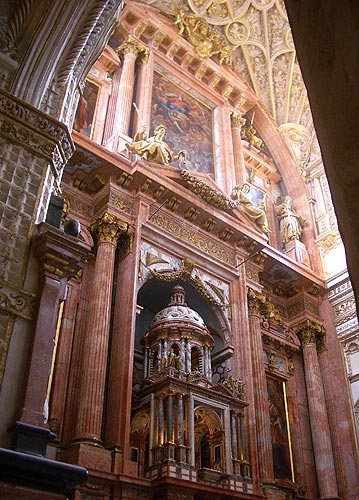
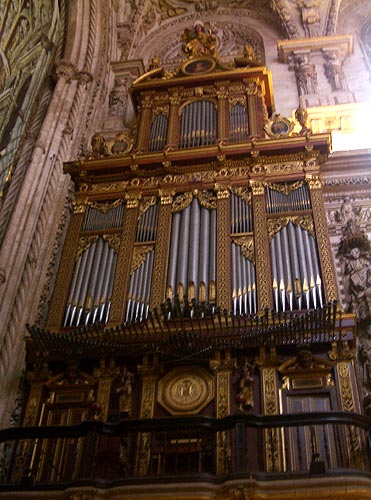
After our visit, lunch and a rest, we explored the other parts of the town on foot. Cordoba was a Roman town long before the Moors and Christians arrived and there are ruins to be seen here. Most impressive was the Puente Romano, the old Roman bridge, now being restored and made a part of a pedestrianzed downtown (below left). We visited an expo that explained the project through multimedia displays and models as well as a rooftop observation deck to enable visitors to see the work in progress and also view the Roman style but newer arch at the foot of the bridge (lower right). We were impressed and pleased to see that Cordoba was making the investments needed to preserve and celebrate its cultural and historic past.
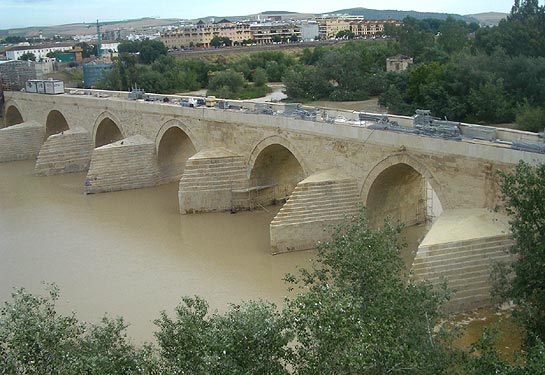
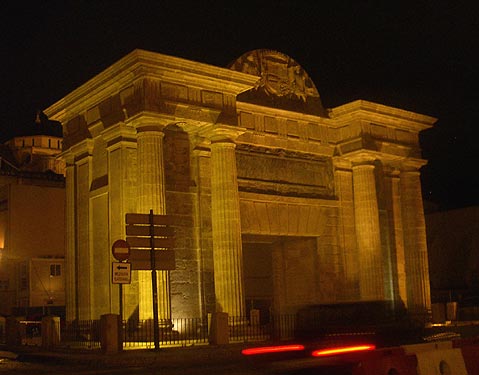
The next morning, we visited the Alcazar de los Reyes Christianos, the palace/fortress of Cordoba (below lower left). Inside the thick walls were installations of wonderful mosaics from the Roman era (below, top) recovered during construction of the Plaza Corredera. Outside, the jardines were the highlight, lush with flowers and greenery, well trimmed hedges and flowing water (lower right), featuring a sculpture (below) of Spain's Queen Isabel and King Fernando listening to the request of a humble Cristobol Colon (Columbus) for financing of his voyage to the west. Having been in his position, making a request for a grant, we empathized with him !
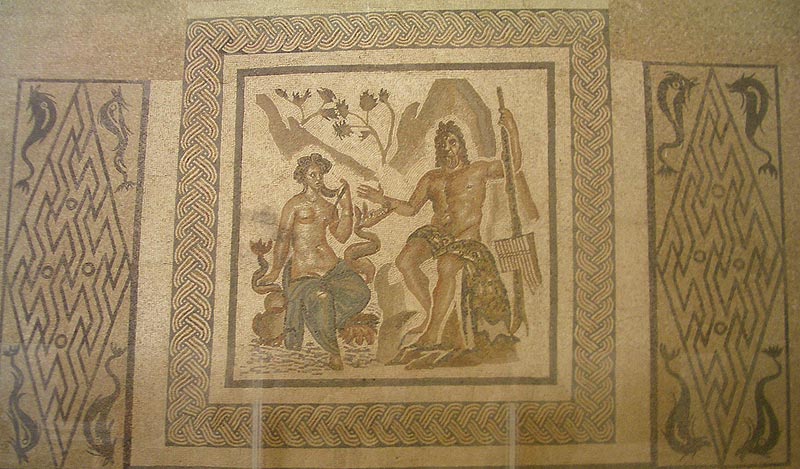
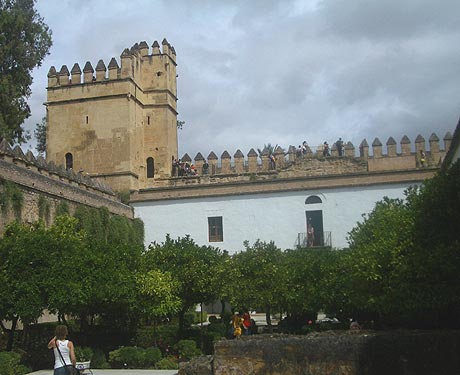
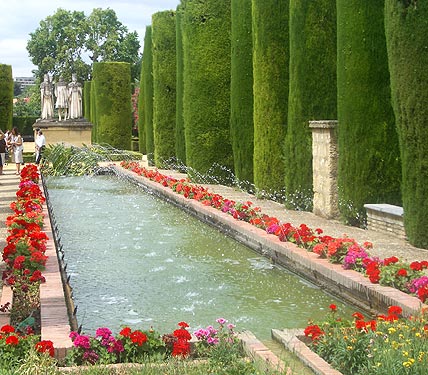
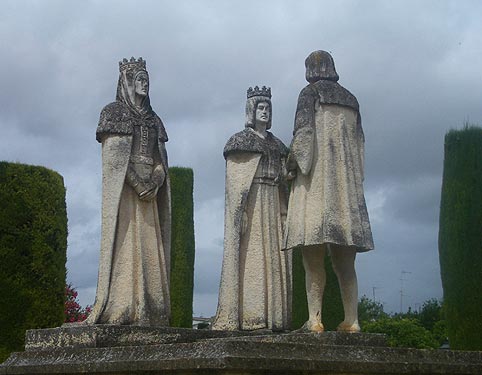
After this perhaps too brief but gratifying visit, we headed back to the Estacion to take the train on to Sevilla.
Click here to return to our Travels in Europe - Summer of 2007 page
Click here to return to our Searching the World page
![]()